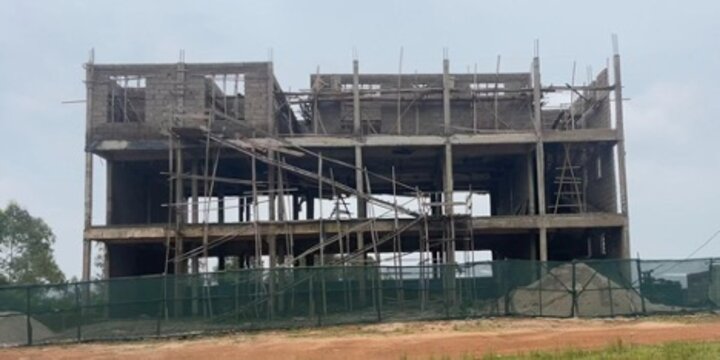Written By: Zane Mrozla-Mindrup and Anna Newcome
The collapse of the Rwandan government and the horrifying violence that followed, reduced the nation to ruins in the mid-1990s. Roads were destroyed, buildings were burned and much of the nation’s workforce was displaced or even killed. Yet, over the last three decades, Rwanda has rebuilt itself and is betting on its infrastructure as a key factor in making it one of Africa’s most powerful economies.
Every infrastructure project starts with construction. In our first week, we noticed some unique differences between the Rwandan and American construction industries. Paul Kagame, the President of the Republic of Rwanda’s outlook on development is fundamentally different than the need and greed of the U.S. to have the next best thing. He states that, “Development is about more than money, or machines, or good policy - it’s about real people and the lives they lead.”
After experiencing Rwanda's culture firsthand this line is very impactful, each community is closely knit, and many jobs rely on manual labor to increase the percentage of active laborers in the job market. With a population of over 13.7 million people there has to be an increase in jobs for said people to survive, and by living in such a small territory one must be close with their neighbor not only for personal gain, but out of necessity.
In rural communities, multiple houses share a communal bathroom, and each house only fits the family’s necessities; space is limited, therefore, the community optimizes the land for resource efficiency thus decreasing the size of houses or other buildings. The foundation of each building is created with wooden beams and pillars (sticks and logs), workers are hoisted by wooden scaffolding and the walls of each building are formed from a compound made of 10% cement and 90% soil, it is then compacted to form dimensional layers. Bricks are made in an almost identical way, the same concoction is formed into a rectangular prism and dried under the heat of the sun. The bricks are laid and the same mixture is then used as mortar in between each layer of bricks. It is quite common in both rural communities and in the city to have an open floor plan, with pillars taking the place of full walls. This leads to better airflow and cooling throughout the buildings as fans or AC is less common and almost nonexistent. Another trick that is commonly used to keep buildings from overheating is using a really reflective glass in windows, this allows for the majority of solar rays to be deflected.
A major difference between Rwanda and the United States is that there is no agency equivalent to the United States’ Occupational Health Safety Administration (OSHA). Workplace safety is left up to individual contractors who may provide an array of equipment ranging from safety glasses to hard hats or may provide nothing at all.
In most construction sites we did see proper PPE for what could be obtained, and at the bare minimum workers were sporting a neon vest for easier visibility. Proper attire is not the only precaution taken in Rwanda in congruence with public health. All of the local businesses are avid on keeping their place of business clean; not only does it make the building appear more presentable but it also helps reduce the quantity of bacteria and viruses transferred in the hot and humid climate of Rwanda. Even in the outermost regions, where cleaning agents and water are harder to come by, the locals work to sweep their dirt paths of manure and debris.
In our research for this trip, we have seen quite a few news stories about Rwanda’s potential to become the Singapore of Africa. While an admirable and achievable goal, this would require serious upgrades to existing infrastructure. Notable new or expanding initiatives in pursuit of said goal include the National Irrigation Project near Nasho, the paving of many thousands of miles of road, new inter-country rail links with East African Community members including Kenya and Tanzania (these are designed to give Rwanda port access, as unlike Singapore the nation is landlocked), and a new International Airport in Bugesera Province, coincidentally also the location of the Rwandan Institute of Conservation Agriculture (RICA), our home base for this adventure.

A typical construction site, emphasizing the use of wood as the main foundation material in Rwanda. Photo Credit: Anna Newcome

Working to install a walk-in freezer to enhance food safety standards at RICA’s cafeteria, these laborers make use of traditional wood scaffolding. RICA imposes protective equipment requirements for on-site contractors. Photo Credit: Anna Newcome

Catching a ride to his job site, a Rwandan construction worker sits on the back of a supply truck. Though he has toe-protective footwear and a hard hat, this worker lacks sufficient protective gear such as a reflective vest and eye protection. Photo Credit: Zane Mrozla-Mindrup